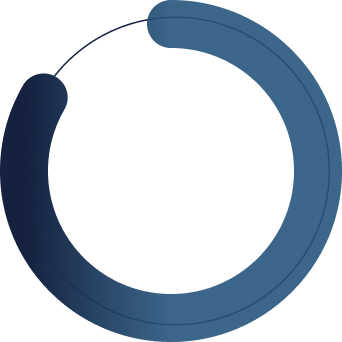Effective onboarding is the key to employee retention. Brandon Hall Group found that establishing a strategy for how to improve your onboarding process can boost retention by 82%. In addition, Bamboo Human Resources determined that employees who have a good onboarding experience are 18 times more committed to their employers.1

Onboarding
Successful onboarding of new employees starts before their first day on the job. This is particularly important for new hires with disabilities who may require accommodations. Taking time before their first day on the job will allow you to identify and implement any technical requirements or physical adjustments to the workplace before they begin work. This will also give you time to prepare your team.
Stages in the Onboarding Process
1. Preboarding
-
Meet with new hires virtually or in person to let them know what to expect, e.g. forms that need to be completed. Walk them through their new hire orientation plan and let them know about team norms and dress codes.
-
Sort out the accommodation plan details during discussions with the new hire, the hiring manager and potentially Human Resources to collect any required information.
-
Ask new hires what information about their accommodations and/or disabilities they feel comfortable sharing with their co-workers. Remember, they are not required to disclose any disability details; they are free to choose what they disclose and to whom.
-
Assign an onboarding buddy and have them send the new hire a welcome email introducing themselves.
-
Ensure that all information, tools and technology that your new employee needs are in place prior to their first day on the job. If they are working remotely or have a hybrid schedule, make sure that they receive any technology required for their home office prior to their first day.
-
Send each new employee a welcome package. This might include some company-related items like a branded mug, coffee or tea and a note to remind them to take all their breaks! Another good idea is to send them pictures of their new teammates, including a fun fact about each of them and their areas of expertise. Make your new hires feel welcome right from the start!
2. First Day/Week
-
Here's the most important thing you can do: get your designated onboarding buddy involved starting from the very first day. Microsoft2 studied the effectiveness of assigning a buddy and found that 56% of new hires who met with a buddy at least once in their first 90 days reported being more productive. That figure jumped to 73% for those who met with their buddy two or three times, 86% for those who met four to eight times and 97% for those who met more than eight times.
-
Host a welcome coffee break or lunch for new employees and the whole team and ensure that it’s accessible and inclusive for people with disabilities. Get everyone to introduce themselves and ask them to set up informal one-on-one meetings in the first two weeks or month to get to know each other better and learn more about the work they do.
-
Provide accessible training and training materials. If new hires will be attending an orientation session, make sure that the facilitators are aware of any required accommodations.
-
Build in some downtime for new hires on their first day and ensure they take all their breaks. Remember that some people are introverts and need some quiet time to recharge. Focus on mental health right from the start – this sends a message to new employees that mental health matters.
-
Ensure that new employees know how and when they can reach you and check in with them frequently.
3. Probationary Period
-
Continue to meet with new employees on a regular basis to discuss progress and provide clear feedback.
-
Engage them in discussions about any challenges they may be facing and work together to make any required adjustments to accommodations already in place.
4. Throughout the Employment Relationship
-
Establish and hold regular meetings with new employees to check in on work assignments, performance, skills development and to provide business updates.
-
Continue to assess any existing or potential barriers, e.g. Are there any new processes? Are there any existing barriers that might prevent employees with disabilities from complying with these processes?
-
Ensure that existing team members continue to contribute to creating a respectful, inclusive and accessible workplace.
-
Ensure that as new members join the team, they are aware of any accommodations in place and how they can best support their colleagues with disabilities (remember: only share information that employees with disabilities are willing to disclose).
The Importance of Managers (and Supervisors)
We have all heard the adage “People don’t leave jobs, they leave managers.”
 A 2019 Robert Half survey found that 39%3 of respondents had left a job due to a manager.
A 2019 Robert Half survey found that 39%3 of respondents had left a job due to a manager.
There is no doubt that managers and immediate supervisors play an important role in employee engagement and retention.
But can managers or supervisors be held accountable if they aren’t given the tools to develop inclusive leadership skills? Be sure to provide learning opportunities that emphasize the importance of the following:
1. Create an Empathetic Teamwork Culture
We all learn and grow from our experiences, collaborations and interactions with co-workers. Teamwork is integral to every successful organization. Being an empathetic leader and appreciating your employees’ perspectives will allow you to model the behaviours you want to see in your team. This will take teamwork to the next level!
2. Accept People as They Are
Empathy means accepting people as they are. Accepting and acknowledging differences will help you foster trust and encourage your employees to confide in you if they are struggling. If everyone feels they can be themselves at work – without masking or downplaying diversity elements such as disabilities – your team will be stronger. If there’s psychological safety and trust within a team, there will be more innovation, creativity and less avoidance of challenging conversations.
3. Ask Questions
Asking respectful and engaging questions shows you are interested in your employees’ perspectives. Take time to ask how they are doing, how they are feeling about their workload or what they think about upcoming projects or presentations – be sure to see the person, not just the employee.
4. Prioritize Listening
You asked the question; now listen to the reply. Listen in order to hear and understand, not to respond. Active listening is a vital skill for inclusive leaders.
As described in the onboarding section above, new hires are perhaps the most important people to include in the onboarding process. However, an effective process will also include other stakeholders. The following should be involved in the onboarding process:
Existing Team Members
Some team members might be nervous that they will say or do something wrong when interacting with employees with disabilities. Talk with your team about their new colleague's accommodations —this can help allay their concerns and make the first few days of the new employee’s employment easier. Please bear in mind that you can only disclose accommodation/disability details that the person with a disability is willing to share. Maintaining confidentiality and privacy is an essential part of building trust; it will also ensure a successful onboarding process.
Here are some examples of helpful information that might be shared:
-
A new hire who is autistic might want new colleagues to know that they don’t typically make eye contact.
-
An employee who has reduced vision might want others to know that they need documents sent to them in a larger font.
-
A person with a support dog might want co-workers to know not to pet or play with the animal.
Additional Support
Managers should know that they don’t have to do all this on their own! New hires will likely have many suggestions about tools and support that will enable them to do their new jobs more effectively. Other resources can also be brought in to lend a hand with the accommodation and onboarding processes:
-
Human Resources (HR) department.
-
Information Technology (IT) department.
-
Facilities department.
-
External subject matter experts specializing in disability employment.